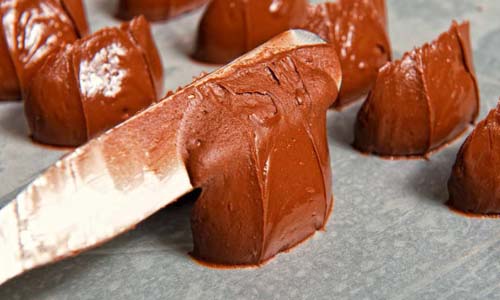Italy: Why ‘king of chocolate’ is so delicious

Rome: There’s chocolate, and then there’s gianduiotto chocolate. An ancestor of Nutella, the melt-in-the-mouth treat is as rare as it is delicious.
Like most renowned Italian artisan chocolate, gianduiotto originates from Piedmont, Italy, where it’s considered the “king of Italian chocolate.”
Made of a rich paste consisting of fine cocoa mixed with the premium hazelnuts that grow in Piedmont’s Langhe region, it’s hugely popular with locals.
Some have it with an espresso for breakfast, and/or after a meal, along with snacks and aperitifs.
Usually wrapped in a thin silver, golden or colored aluminum foil, the ingot shape treat has been produced by local chocolatiers here for centuries.
Its birthplace is the region’s capital, Turin, which has been known as Italy’s “chocolate capital” ever since maître chocolatiers began making their sweet artisan delicacies for the House of Savoy, the royal dynasty established in the Savoy region of Italy, here in the 1500’s.
Iconic chocolate
The name gianduiotto is thought to come from carnival figure Gianduja, a jolly wine-loving peasant, popular in the 1800s, who embodied the epicurean nature of locals.
Initially called givù (or stubs,) gianduiotto became famous when the general public apparently got their first real taste as the treats were handed out during Turin’s 1865 carnival celebrations by an actor dressed as Gianduja.
According to revered artisan chocolatier Guido Castagna, gianduiotto is far more than just an iconic chocolate. It’s a symbol of Turin, and a big part of the city’s identity.
“Poor gianduiotto, it was born as a second class surrogate for cocoa,” Castagna tells CNN.
“It had humble origins but then became an elite, niche product of the highest quality, the first ever to be wrapped [in foil] in the history of chocolate.”
Gianduiotto was originally born out of necessity — to overcome a cocoa shortage in mainland Europe.
When Napoleon Bonaparte conquered northern Italy and declared war against Britain in 1806, he banned all English-imported goods, including cocoa beans.
As a consequence, pastry makers in Turin decided to switch to something a little closer to home — the hazelnuts that grew in abundance in the surrounding lush hills.
After mixing them with sugar and the very little cocoa they still had on their shelves, they were able to create a rich paste that was eventually refined and honed into gianduiotto.
A century or so later, Pietro Ferrero, a confectioner from Piedmont, created Nutella based on that old recipe.
The hazelnuts used to make gianduiotto can be found growing in the Langhe region of Italy.
Cooper/ullstein bild/Getty Images
Back in the 1800s, hazelnuts were very affordable, says Castagna, but things are very different now. Not only are they far more expensive, but the “tonda gentile” hazelnuts produced in Langhe have Protected Geographical Indication status, a European designation aimed at protecting regional foods.
“They’re Piedmont’s gold, absolutely the best in the world,” he adds, before explaining that the hazelnuts are priced at €16 per kilogram versus €10 per kilogram for high quality cocoa.
Rich in aromatic oil, they blend perfectly with, and exalt the flavor of the cocoa butter, creating a tender, voluptuous and creamy concoction.
“Gianduiotto is now a specific chocolate type alongside dark, white, and milk chocolate,” says Castagna.
The most savory artisan gianduiotti are those with the highest percentage, usually between 25 and 40%, of hazelnuts.
Castagna uses a sophisticated mechanical procedure called “extrusion,” where semi-solid tidbits of gianduia paste are squeezed onto a tray into the form of gianduiotti.
In the old days, making gianduiotti was something of a ritual. The process involved repeatedly battering the hazelnut paste to give it consistency and then kneading it as though it were pizza flour.
Women, known as “gianduiere,” would sit in pairs around a table with the gianduia paste positioned in the middle.
They’d then scoop it up with two long spatulas, roll it over several times, and cut off tiny morsels with a butter knife, dropping them onto a tray to solidify.
Grandmothers would regularly treat their grandchildren to packages of fresh, delicious gianduiotti, which they’d pick up at the chocolate makers, usually right after stopping at the bakery.
Up until the 1960s, Turin was dotted with hundreds of artisan boutiques. But as labor costs rose and mass production kicked in, they began to disappear.





